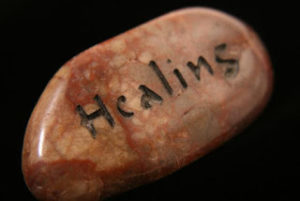 Naturally our primary focus in healing is to stop the bleeding. We need to find the cause for the self-defeating behavior, the inability to let things go even decades later, the damaging relationship patterns that inform every connection we try to make, the depression, self-sabotage, addictions, driven to the point of destruction issues that make our lives survivable but hardly livable. So we look for the root of the problem, then to something that will make things stop. We dig and explore, uncover and release, forgive and move on. We go forward and back, moving incrementally to a point where we have resolved the issue or at least have stopped any further damage from occurring.
Naturally our primary focus in healing is to stop the bleeding. We need to find the cause for the self-defeating behavior, the inability to let things go even decades later, the damaging relationship patterns that inform every connection we try to make, the depression, self-sabotage, addictions, driven to the point of destruction issues that make our lives survivable but hardly livable. So we look for the root of the problem, then to something that will make things stop. We dig and explore, uncover and release, forgive and move on. We go forward and back, moving incrementally to a point where we have resolved the issue or at least have stopped any further damage from occurring.
Unfortunately, because that’s where the focus is, we tend not to see that this is only the first half of the process. Getting us to not be broken is not the same as becoming well. Achieving a point where things are neutral, are damage controlled, have been fully diagnosed and are no longer causing blinding pain is necessary, but it isn’t the end. It’s where healing begins. I mean, we don’t take the cast off a broken leg and think that the leg is completely fine and ready to carry us through a triathelon. No, we pay attention to it, figuring out what it can do, what it still can’t, and learning how it is now different than it was. After that we begin the process of helping it truly heal. We work on building up muscles, strengthening and lengthening tendons and ligaments, working for full range of motion once again. We actively participate in the healing process, encouraging ourselves through this non-linear, co-creative, organic journey to become well, to heal, to evolve into someone who has broken a bone but is no longer broken.
So once we have stopped the damage, discovered the problems, and explored everywhere that has been effected, it’s time to start proactively putting our life back together. Or perhaps its time for us to start building the life we deserve but haven’t yet had a chance to create. It won’t happen on its own any more than a broken leg will become robust on its own. If we keep avoiding it, favoring the other, our entire body will adjust to not using it and we will remain forever stuck in the place between what was and what could be. Of course, we don’t know what any of that will look like any more than we know how our leg will feel or behave now that it’s had this new experience. It’s something we need to learn through trial and error guided by the wisdom of other’s knowledge and experience. So give yourself some grace, recognize you’ll be awkward and wobbly, making mistakes and needing plenty of time and patience, and take a step…
